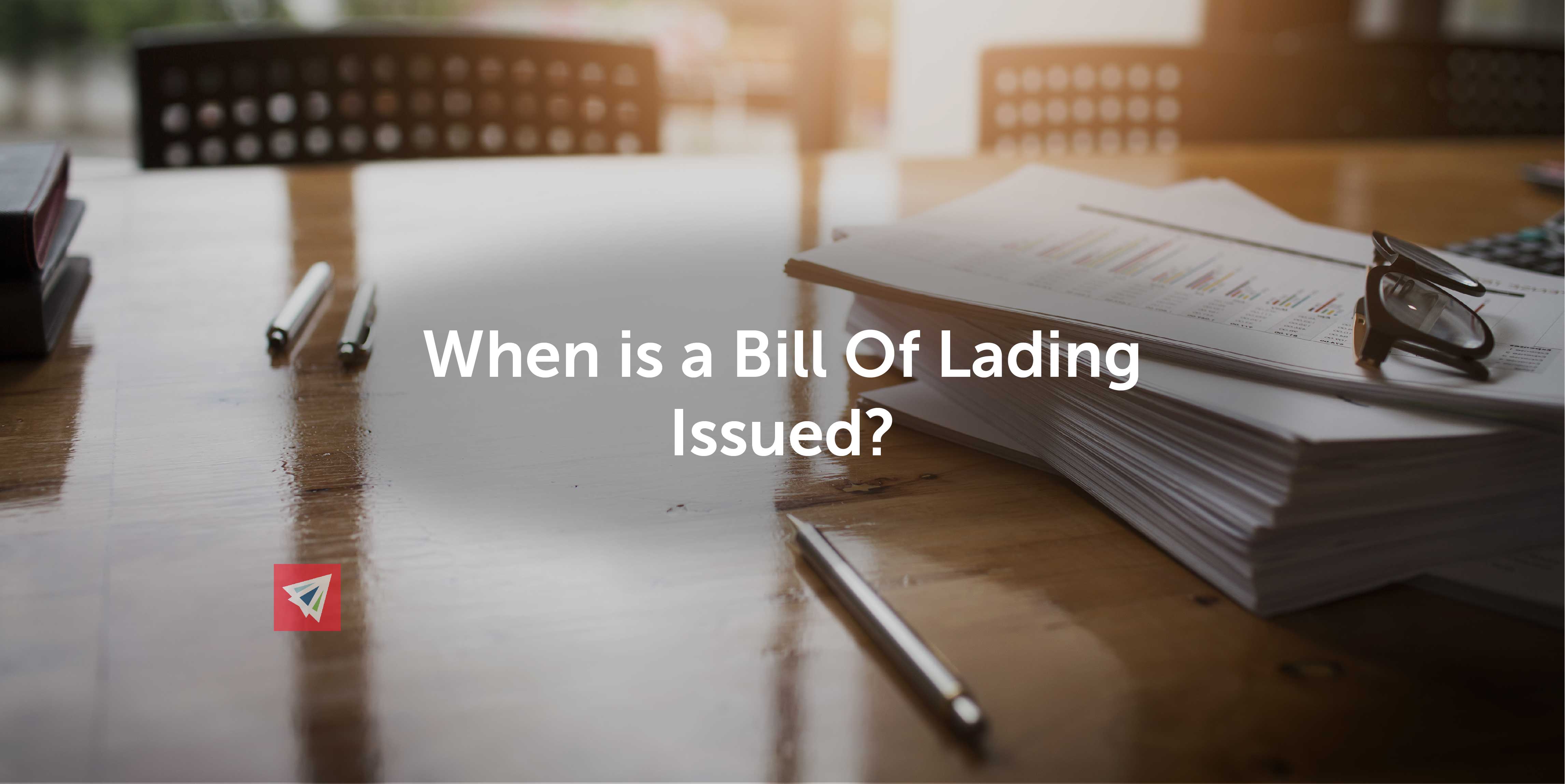There’s so many parties involved in the purchase, storing, handling, and transportation of internationally purchased goods. After all, you need a buyer and a seller, truckers, draymen, trains, airlines, ocean carriers, warehouses, and distribution centers all involved in getting the goods from point A to point B. But with all that movement and handling, someone has to assume ownership and responsibility of the goods throughout the process. Unlike a simple purchase from the grocery store whereby the receipt upon purchase indicates you are the new owner of the goods, international product purchasing isn’t so simple. This is why a Bill Of Lading must be issued.
What is a Bill Of Lading For?
A Bill Of Lading plays a few roles. Firstly, it serves as a receipt for the goods being shipped as an indication of when they have been loaded onto a vessel. Secondly, a Bill Of Lading acts as a contract of carriage, meaning it contains all relevant details about the type, amount, condition, and destination of the goods. It also serves as a title of the goods. In other words, whoever holds the original Bill Of Lading claims ownership of the goods.
What Does Issuing a Bill Of Lading Mean?
A Bill Of Lading must be issued for the delivery to take place. A normal Bill Of Lading is issued by the carrier, or in the case of sea freight, by an ocean carrier. An ocean carrier is someone who provides international transportation of goods with the primary mode being waterway, although they can also combine rail and road services.
Put simply, a Bill Of Lading is issued to indicate that the shipment has been loaded onto its appropriate vessel for international transit.
When a Bill Of Lading is Issued
A Bill Of Lading is issued at the time it is loaded onto a vessel for international transit. In the case of seaway transit, the Bill Of Lading is issued at the time it is loaded onto the ocean vessel. However, there is an exception in the case of multimodal transport. Freight Forwarders and NVOCC’s are able to issue a multimodal Bill Of Lading at the time the goods are loaded at a rail port.
For example, if a company in Minneapolis is shipping 200lbs of coffee to Malaysia by sea, a Bill Of Lading could be issued at one of two points. If the goods are trucked to a seaport, the Bill Of Lading would be issued at the time the goods are loaded onto the ship for sailing. However, the Minneapolis company could also work with an NVOCC to arrange for intermodal transport of the goods via rail to the port. In this instance, a dock receipt would be issued at the time the goods are picked up from the company’s door by a truck, and the multimodal Bill Of Lading would be issued at the time they are loaded onto a cargo train at the Minneapolis rail port.
House Bill Of Lading vs. Master Bill Of Lading
You can think of an international transaction involving shipping of goods as having two levels of parties involved. On one layer, you have the actual buyer and seller of the goods. In our previous mentioned case, these would be the company in Minneapolis selling the coffee beans, and the company in Malaysia purchasing the coffee beans. The next level or layer of parties involved would be the NVOCC or Freight Forwarder, and the Shipping Line or Carrier. When it comes to a Bill Of Lading, two different types are issued to accommodate both levels or layers of parties involved in this transaction.
The 2 types of Bills of Lading are: 1) House Bill Of Lading, and 2) Master Bill Of Lading. A House Bill Of Lading serves on the buyer/seller layer. It is issued by the Freight Forwarder or NVOCC, but the actual shipper and actual consignee will be listed on the HBL. The Notify on the HBL could be the same as the Consignee, but it could be any other party as dictated on the Letter Of Credit.
The Master Bill Of Lading is issued by the carrier or shipping line and details the shipper as the NVOCC, their agent, or the Freight Forwarder. The consignee will usually be the destination agent or counterpart of the NVOCC (the Freight Forwarder/NVOCC in the foreign country the goods are being shipped to/from.)
Conclusion
Bills Of Lading can be a tricky topic. They are crucial for international transport of any goods, but with so many parties involved in the shipping of a container it’s confusing when and who issues what types of Bills Of Lading. A Bill Of Lading serves three primary purposes: 1) a receipt that goods have been loaded onto their vessel for international transport, 2) a contract of carriage that details the cargo, and 3) as a title of the goods indicating ownership of the cargo. A House Bill Of Lading is issued by a Freight Forwarder or NVOCC to indicate the actual buyer and seller of the goods, while a Master Bill Of Lading is issued by the carrier or shipping line and indicates the shipper and consignee as the local and foreign freight forwarders or agents involved in the transport of the goods.
If you have any questions regarding Bills Of Lading, when they are issued, how to get one, and which type is right for your situation, give one of our team members a call and we would be happy to help you out!

One thought on “When is a Bill Of Lading Issued?”